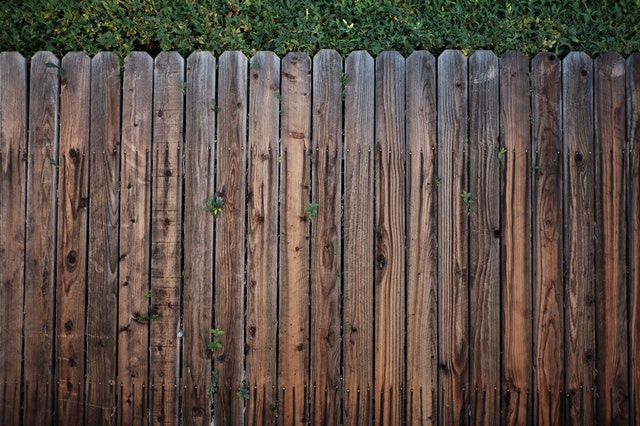How to attach privacy screen to fence
Privacy fences serve a variety of purposes. They can be used as a decorative element and to improve the ‘face’ of a home’s exterior. They might also do an excellent job of concealing your neighbor’s unsightly exterior. Viewing vine-covered trellises or the crisp parallel lines of a horizontal fence is always visually pleasant. What factors should you think about when selecting a privacy fence? You’ll want to think about topics like longevity, durability, upkeep and reparability. Then there’s your general style and your financial constraints.
Ideas for privacy fences:
It can be difficult to know where to begin when it comes to privacy fencing. Ask yourself some basic questions before settling on the ideal solution, such as:
- Do you require complete privacy or do you prefer a little transparency?
- What types of privacy fencing are appropriate: wood, bamboo, metal, vinyl, repurposed materials and stone?
- Is the wood going to be natural or stained?
- What are the most effective colours?
- Are there any topography characteristics to consider, such as sloping land?
What is your financial plan? Some initiatives will inevitably cost more than others. Consider how a higher-quality privacy fence will increase the value of your home, making it a beneficial investment.
Material selection
Consider the various materials that can be used to create a privacy fence. Don’t limit yourself to wooden slats. There are many more fencing alternatives available in other materials. Recycled plastics, vinyl, aluminium, steel, concrete, and wrought iron are just a few examples. The most recent composite materials are usually a fantastic option because they are low-maintenance and long-lasting.
You might also think about masonry work. Consider hiring a stonemason to build you a beautiful stone wall, even if it isn’t the cheapest option. Modern gabion walls, a robust fence type that dates back to the middle ages, are also a possibility.
Pre-formed etched metal privacy screens, which come in a variety of shapes and styles, are another alternative. You can also use solid wood instead of planks white birch trunks, for example, look fantastic. Finally, frosted glass panes give privacy while allowing light to pass through.
- Pick a line of diamonds at the top of the mesh. This line will serve as the visual guide for keeping the screen level all the way down the fence. If the mesh is uneven, you can make a line by stretching a string from tension bar to tension bar.
- For panels, align the top border of the cloth with the diamond or string line you want to create. Then align the fabric’s left edge with the tension bar. To keep your position, place a 50lb tie wrap on the upper left corner. Then bind the screen to the tension bar with more tie wraps. The backward “L” should be formed by these two tie wraps. Check to see if the screen’s top left corner is square.
- Once the corner is squared, hang the next five tie wraps a foot apart along the top of the screen, following the diamond line. To pull the screen flat and taut, angle the tie wraps slightly to the right. Keep your tie wraps about a foot apart and avoid pulling them too tight. Overtightening the cloth will result in a “wave” effect at the top and bottom. Pull the knots tight enough to keep the cloth taut while maintaining the screen level along the top. Keep the screen flat rather than stretching the fabric.
- Tie wraps should now be placed down the screen’s side, following the inside of the tension bar. Keep the material taut against the barrier and put them at one-foot intervals. Use your hole-punch through the fold of the material for rolled goods.
Hang the screen once more
- When working with rolled goods, keep the roll in front of you to give yourself more room to work. For panels, keep sliding the S-hook nearest to you in front of you around five feet. This will help you save time by keeping the screen aligned along the top.
As you put your ty raps, stay around five feet forward of the bottom of the screen. Pull the wrinkles out of the screen with the bottom 120 lb tie wraps and maintain the screen taut. You can keep one person on top and the other on the bottom with two people. You can really move once you get into a rhythm. Remember to slightly tilt your tie wraps to the right!
At the final stage
- For panels, form “L” with two cable ties in the upper right corner when the person on top reaches the end of the panel.
Then run the cable ties along the side of the building. Pull the remaining creases out of the screen with the bottom right corner, and then hold the corner taut with two 120lb tie wraps.
For rolled items, pull the screen flat when the person on top reaches the end of the roll or the next tension bar to obtain a good indication of where the screen’s edge should be.
The excess screen should be folded underneath and clipped about three inches in front of the edge. Place tie wraps in the top right corner and down the side with a hole punch, aligning the edge with the tension bar’s end.
Pull the wrinkles out of the bottom right corner, then wrap two 120lb tie wraps around the corner.
Additional tie wraps
Ty’s raps are about to break. Having extra on hand is a smart idea. A tie wrap must be replaced as soon as it breaks. Check the tie wraps on a regular basis and replace any that are broken right away. The screen’s lifespan will be substantially extended as a result of this.

